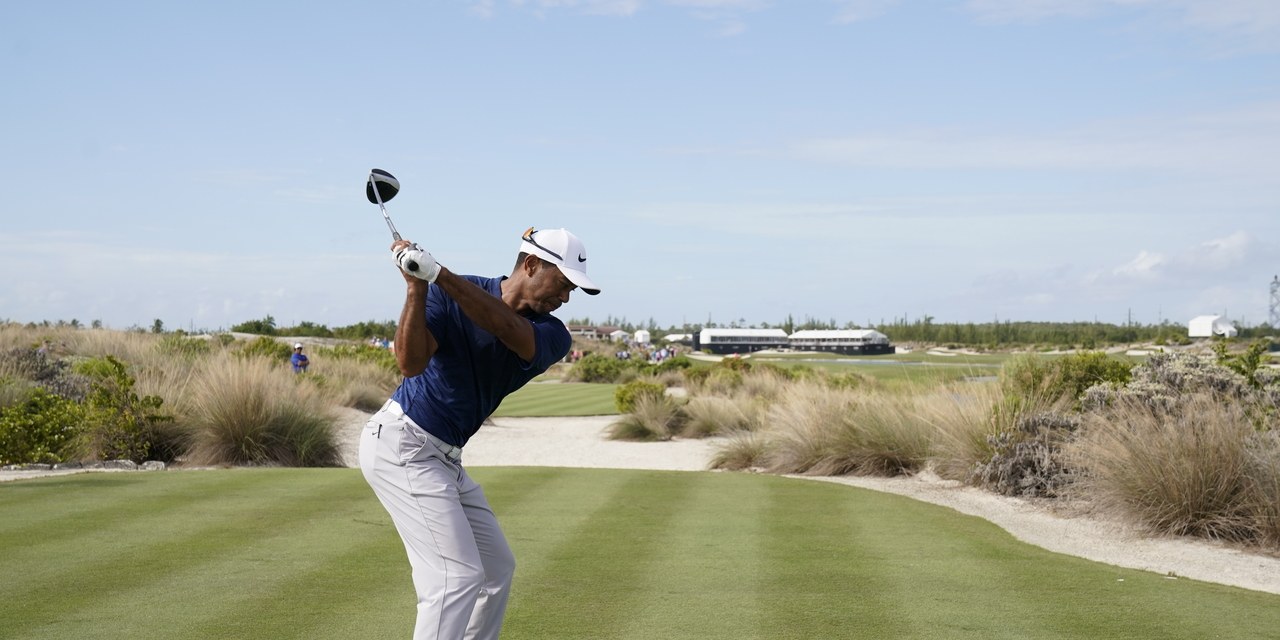His swing is that close to being his best ever, says one Hall of Fame instructor
By Ron Kaspriske
When you consider Tiger Woods finished 17th out of 18 golfers at last weekend’s Hero World Challenge in the Bahamas, heaping praise on his swing might seem dubious. But after watching him play, and then carefully studying images of his swing frame by frame, Hall of Fame teacher David Leadbetter says there is little not to like.
“In my line of work, you can always pick any swing to death,” he says. “But I bet most instructors would agree that you’d have a hard time finding fault in what Tiger’s doing now. Just based on what I saw of his swing, if you had heard he won instead of finishing 17th, you wouldn’t have doubted it for a second.”

Before he goes into detail of what he sees in Woods’ swing—and what he would suggest to further improve Tiger’s ball-striking, particularly consistency with the driver—Leadbetter says Woods has done a “remarkable job” calming down the things in his swing that contributed to wild tee shots and, perhaps, issues that led to surgeries on his back.
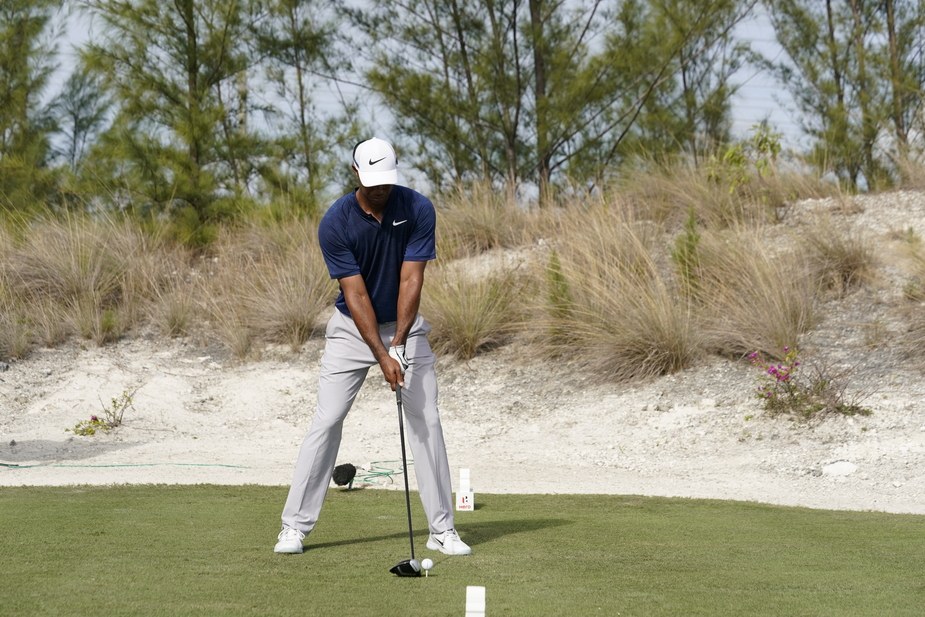
J.D. Cuban

J.D. Cuban
This is the starting point of where Leadbetter suggests Woods make an adjustment. “This look you see here in these two frames goes back to the big, wide backswings of Jack Nicklaus and Greg Norman,” David Leadbetter says. “The old theory for power used to be to extend the club back as far and as wide as possible with little wrist set. The more modern swing has less width, an earlier set of the wrists and a big coil with the torso. My feeling is that this wide takeaway you see here with Tiger is contributing to timing issues and indirectly placing more stress on his lower back.”
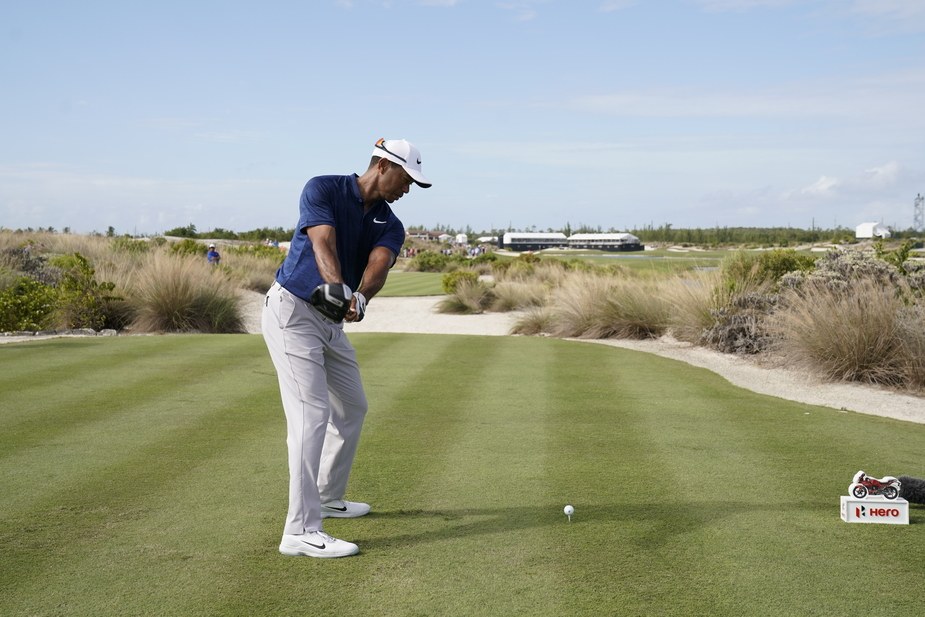
J.D. Cuban
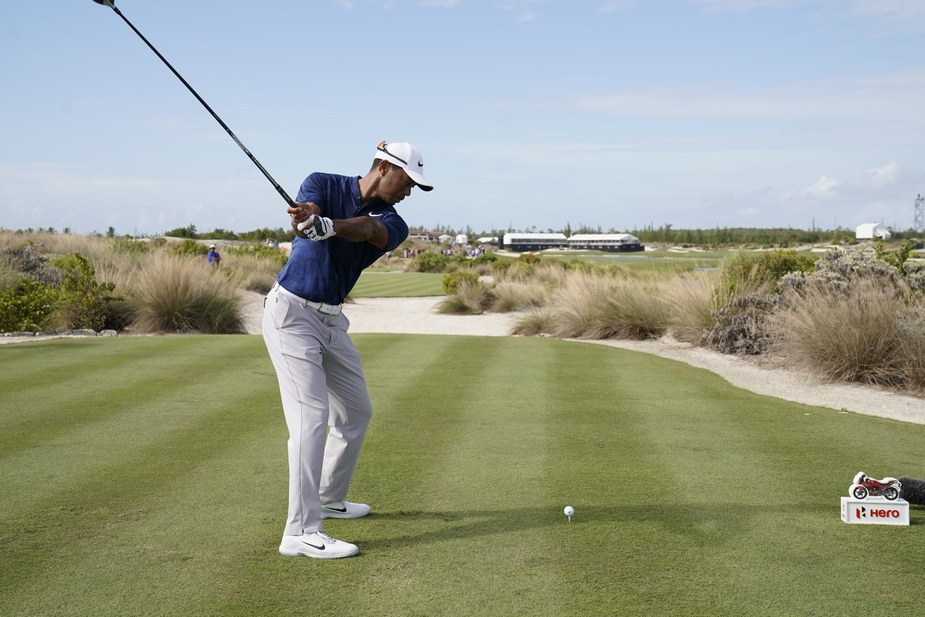
J.D. Cuban
You’ll notice in these two frames that Woods doesn’t hinge the club upward until this late point in the backswing. “It’s a very late wrist set, and in my opinion, it’s where his timing issues start because his body stops turning noticeably sooner than his arms and club reach the top,” Leadbetter says.
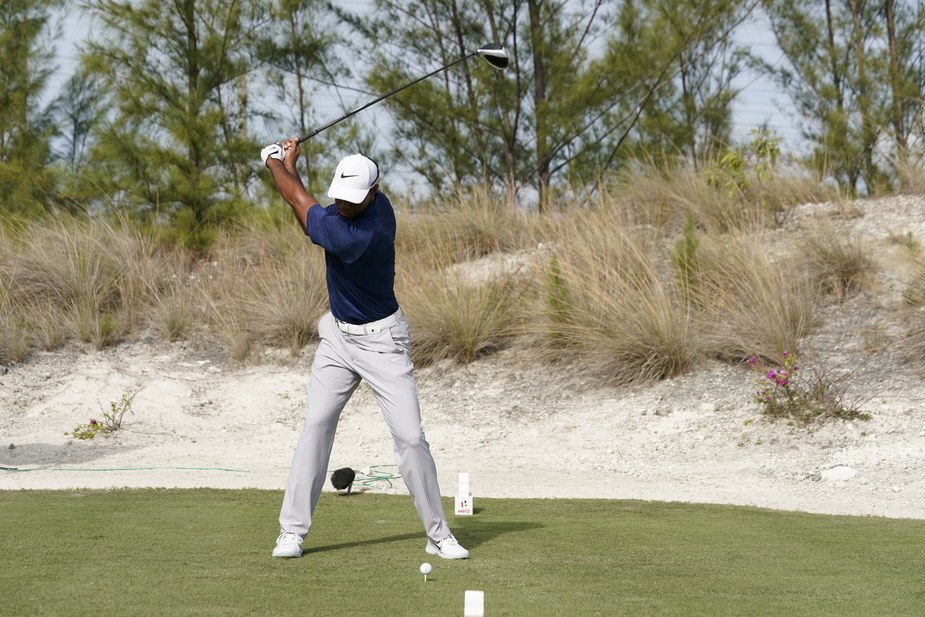
J.D. Cuban
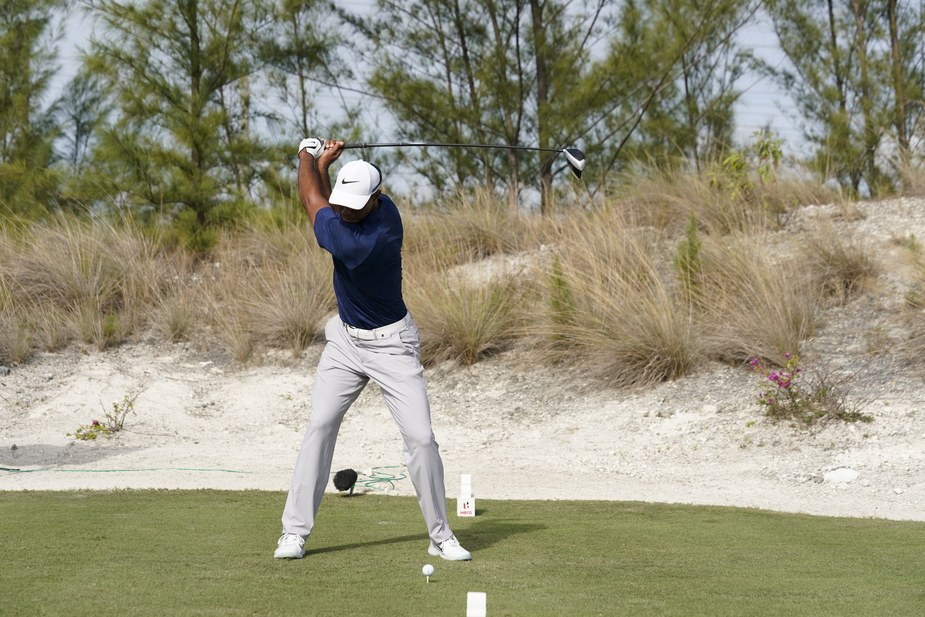
J.D. Cuban
Take a look at these two frames (above), they’re the most telling of what he would change, Leadbetter says. “In the first photo, Tiger’s upper body is fully complete with its coil. But look in the next frame how much farther his arms and club have run on. They’re no longer moving in sync with his body turn. They’re continuing the swing. What that means is that they will have to somehow catch up to his body on the downswing. Being a great athlete, Tiger can obviously do this. But this is where the inconsistency can really occur for anybody. If the lower body gets a little too quick and too far ahead, then the arms and club will be late, and there’s too much reliance on the hands and timing to square the face at impact. That lack of sync was the reason why Tiger used to complain a lot about being ‘stuck.’ ”
“I will say, however, that compared to a few years ago, his sync is way better now. I just think Tiger will have much more control—of his driver in particular—if his arms and body finish the backswing at roughly the same time. This is true for any player. What I’d like to see is less width starting back and an earlier wrist set. He doesn’t need all that extension for power. In fact, improving his synchronization would still help him maintain power while boosting accuracy.”
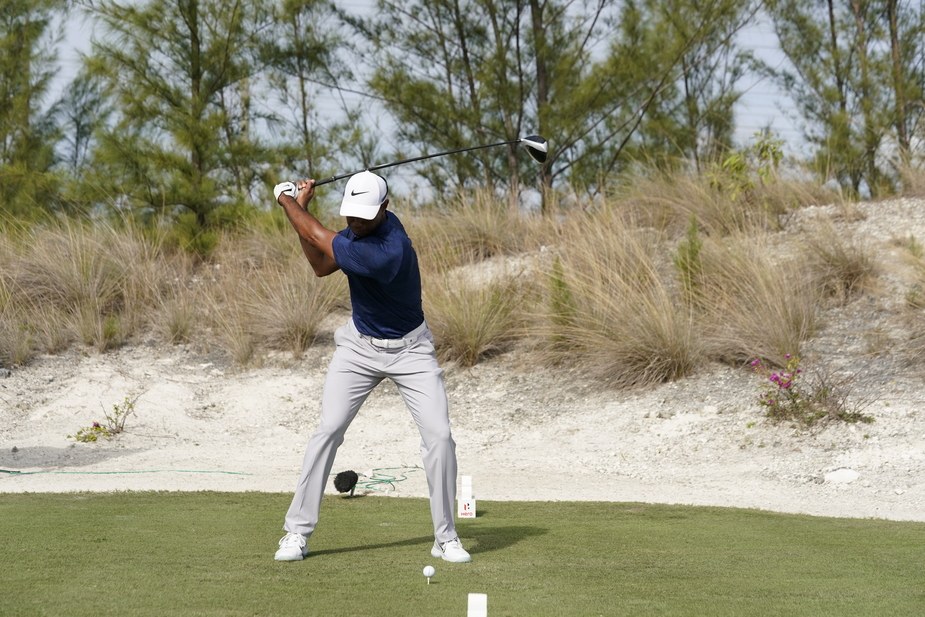
J.D. Cuban

J.D. Cuban
These two photos of Tiger in the downswing look really good, Leadbetter says. “But if he was off a degree or so, it would make a big difference in impact,” he says. “This syncing of the arms and body is one of the most important and misunderstood aspects of the golf swing. When the arms run on at the top independently, the body has to wait for them to catch up on the downswing. This is where the timing aspect comes in. Swinging the club at the speed Tiger does (120 miles per hour), it doesn’t take much for the club to come into impact a little open. That results in his trademark miss to the right, or with overcompensation, a miss to the left—especially under pressure in tournament play.”

J.D. Cuban
The way you can tell his syncing has improved is by looking at the level of his shoulders through impact, Leadbetter says. “In the past, his right shoulder would appear much lower here and tilted as he hung back to try to save the shot,” he says. “And that swing put more pressure on his lower back. But you can see here how his shoulders are rotating on a much more level plane. He doesn’t have that ‘stuck-and-under’ look of the past.”

J.D. Cuban

J.D. Cuban

J.D. Cuban
Another thing to note is that there is far less of a dip in Woods’ body from address to impact, Leadbetter says. “He’s still getting a lot of power from his lower body. In fact, his legs look fantastic as he changes direction. The knees separate, but there’s not as much squat. It’s got the look of Sam Snead’s swing.”
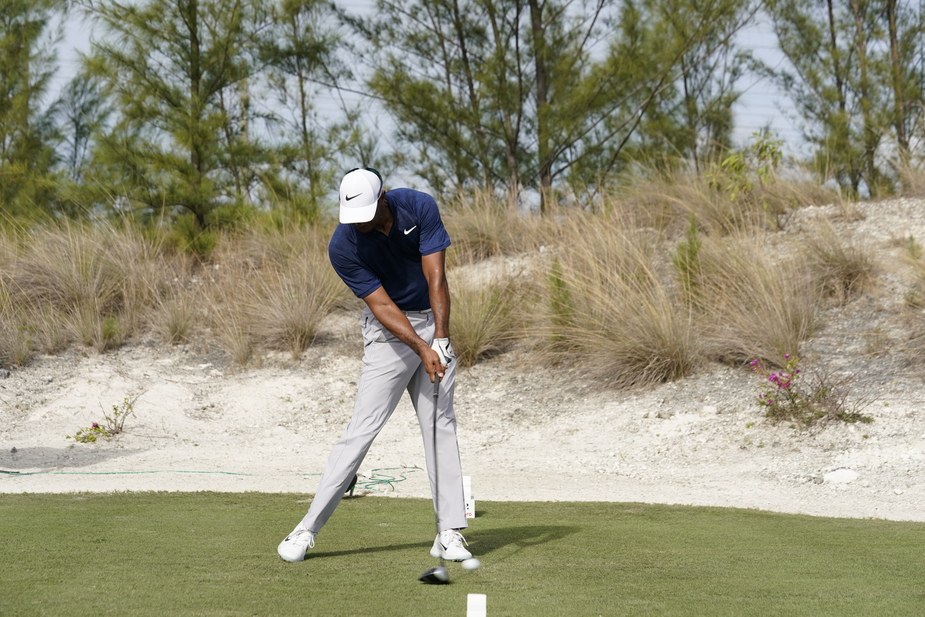
J.D. Cuban
All of this contributes to a textbook impact position, Leadbetter says. “He might have been a touch late syncing his swing on the way down, but this is the impact position of a person in great control of the club. I really like the straight line formed by the shaft and his left arm. It looks like he can shape the shot any way he wants from here.”
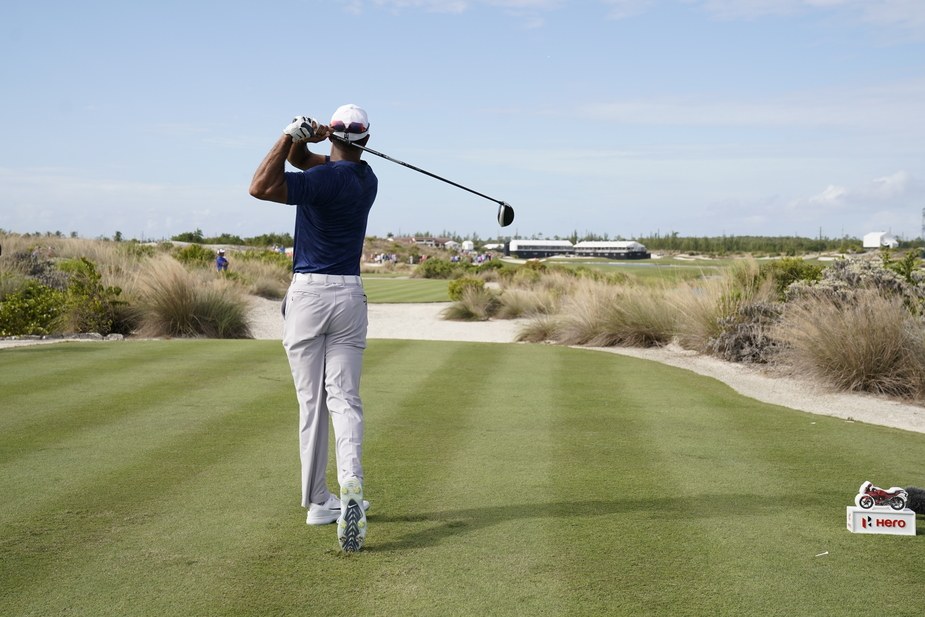
J.D. Cuban
Leadbetter’s parting shot on Woods’ swing has to do with-fittingly-the way he finishes the swing. For a number of years, Woods’ finish had a “manufactured” look, like a gymnast that lands on the mat off balance but then straightens up for the judges. Now his finish looks more natural. “It’s got the look of the classic, well balanced follow-through,” Leadbetter says. “This shows you he’s not far off from a technical standpoint.”
“Tiger is close to swinging at his very best. And my feeling is that if he synced up his swing better going back, which would require less timing coming down, you would see a big improvement in his driving consistency. But overall this is a very impressive golf swing. It’s a great sign for Tiger’s future.”

